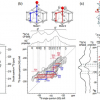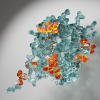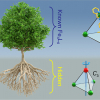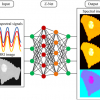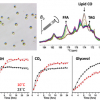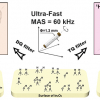Magnetic Resonance News
Magritek has made benchtop NMR suitable for the rapid identification and quantitation of analytes during chemical reactions, in batch and continuous flow processes. This significant advancement in NMR has been achieved by Magritek thanks to the improved magnet performance of its Spinsolve ULTRA system, which enables effective and robust solvent suppression.
The new technology integrates several important parts of the spectrometer into one device and is compatible with relatively large magnetic fields.
A consortium led by the University of Warwick has been awarded £17 M to procure the UK’s most powerful NMR instrument at 1.2 GHz.
A new review summarises the recent advances in ssNMR of zeolite catalysts, mainly covering the new applications of ssNMR to investigate zeolite framework structure, catalytically active sites, intermolecular interactions and catalytic reaction mechanisms.
New method combines zero- to ultralow-field nuclear magnetic resonance with the SABRE-Relay hyperpolarisation technique.
An NMR method enhanced by a very powerful amplifier, in combination with molecular dynamics simulation, enables the detection and accurate characterisation of proteins at physiological concentrations.
An NMR-based Molecular Phenomics Clinical Research Tool for “Long COVID” multi-organ risk assessment uses a multiplexed combination of biomarkers.
Researchers are developing technology for compact high-performance magnetic resonance units, 200× smaller than current systems.
£29 million national scanning facility will underpin a broad range of clinical and neuroscience-focused research programmes in the UK.
NMR spectroscopy has shown how two types of tau proteins mix together in a nearly random way to generate the tangles seen in the brains of Alzheimer’s patients.
The Gordon F. Kirkbright and Edward Steers awards are seeking nominations.
Hyperpolarised water boosts signal intensities of proteins, DNA and membranes in NMR spectroscopy.
Researchers have used NMR spectroscopy to conduct the first assessment of metabolites in African savanna elephants, an important step in understanding the relationship between their metabolism and health.
Polyethylene accounts for nearly one-third of the world’s plastic waste. An interdisciplinary team from the University of Bayreuth has used NMR spectroscopy to investigate the progressive degradation of polyethylene in the environment for the first time.
Using the Hyper-CEST NMR technique, researchers have revealed two previously little researched variants of a type of transport container from the class of metal–organic polyhedra (MOPs). This could lead to a novel type of MRI contrast agent.
A new algorithm allows real-time reconstruction of images that combine optical spectral and magnetic resonance imaging data.
Researchers from the Leiden Institute of Chemistry have shown proof of principle that live-cell structural changes and metabolic processes can be followed in real time with NMR spectroscopy.
A team at the University of Oxford has developed a new type of blood test, using NMR metabolomics, that can be used to detect a range of cancers and whether these cancers have metastasised in the body.
A research team from the Dalian Institute of Chemical Physics has unravelled the surface hydroxyl network on In2O3 nanoparticles with high-field ultrafast magic angle spinning nuclear magnetic resonance spectroscopy.
A predictive model based on magnetic resonance spectroscopy can detect lung cancer from alterations in blood metabolites. The discovery paves the way for early-stage lung cancer screening, which may dramatically improve survival rates.


